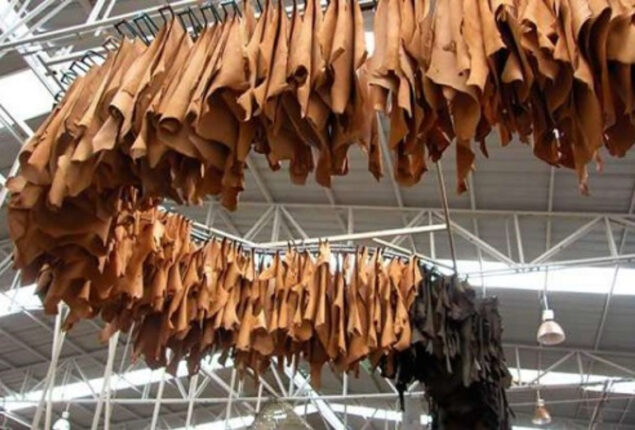Pakistani large industry production grows 7% in 3 quarters, 26.9% in March 2022
The Large Scale Manufacturing Industries (LSMI) production grew by 7 percent during...

According to the Pakistan Tannery Association (PTA) database, the leather industry is the most important sector of Pakistan’s economic recovery, accounting for 5.4% of total export earnings and 5% of GDP.
Vice Chairman of Pakistan Tannery Association (South Zone) Yousuf Shafiq said, “95% of the products produced by the leather industry are exported. So, the leather industry rather than being driven by the domestic factors is mostly influenced by the outside factors.”
“The recent campaign against the leather industry in the international market was caused by negative branding as a result of its environmental impacts, such as the contamination of domestic water, extreme crowding, and terrible treatment of animals during transit and slaughter,” he said.
Yousaf added, “Pakistan is in competition with its neighbors like Bangladesh and India. The cost of hides is almost the same in all regions, but the cost of transformation from raw materials to the fine export quality leather is very different.”
“Pakistan always remains behind its neighbors in terms of production cost. Other Asian countries do have competitive prices due to the availability of cheap labor, low cost, and uninterrupted supply of electricity,” said the PTV vice chairman.
He said, “Pakistan has to beat its neighbors in all terms to grab a major share in the international export market. Our leather industry leads its competitors in the region in terms of quality of the product even at a higher cost.”
“The leather industry does face some challenges at the national level. For example, the cost of goods is rising daily as a result of the rising inflation,” he said.
Furthermore, historically, the total sales tax refund process has been long and complicated. Exporters are unable to satisfy their responsibilities due to cash-flow issues, as the government is waiting too long to settle pending refund claims. High-cost energy inputs and stalled refund claims are harming this industry’s production and exports.
“For betterment of the leather industry, the government should provide low-cost and uninterrupted electricity to the industry. The sales tax claims should be released as soon as possible so that exporters may not have any cash-flow problems,” Yousaf said.
The export of leather and leather products reached USD944.707 million in the Fiscal Year 2021-22, up 13.4% from USD833.199 million in the Fiscal Year 2020-21. The leather sector believes that its exports will soon surpass $1 billion.
More than 800 tanneries in Pakistan are actively working to manufacture high-quality finished leather from cow, buffalo, sheep, and goat skins. Pakistan is well-known for producing high-quality leather and leather items.
Pakistan’s leather industry values excellent environmental practices. The Pakistan Tannery Association, for example, has built a Combined Effluent Treatment Plant (CETP) in Karachi’s Korangi Industrial Area (KIA).
The factory not only treats the tanneries’ wastewater but also public water. The factory draws overseas consumers since it meets National Environmental Quality Standards (NEQS).
Catch all the Business News, Breaking News Event and Latest News Updates on The BOL News
Download The BOL News App to get the Daily News Update & Follow us on Google News.